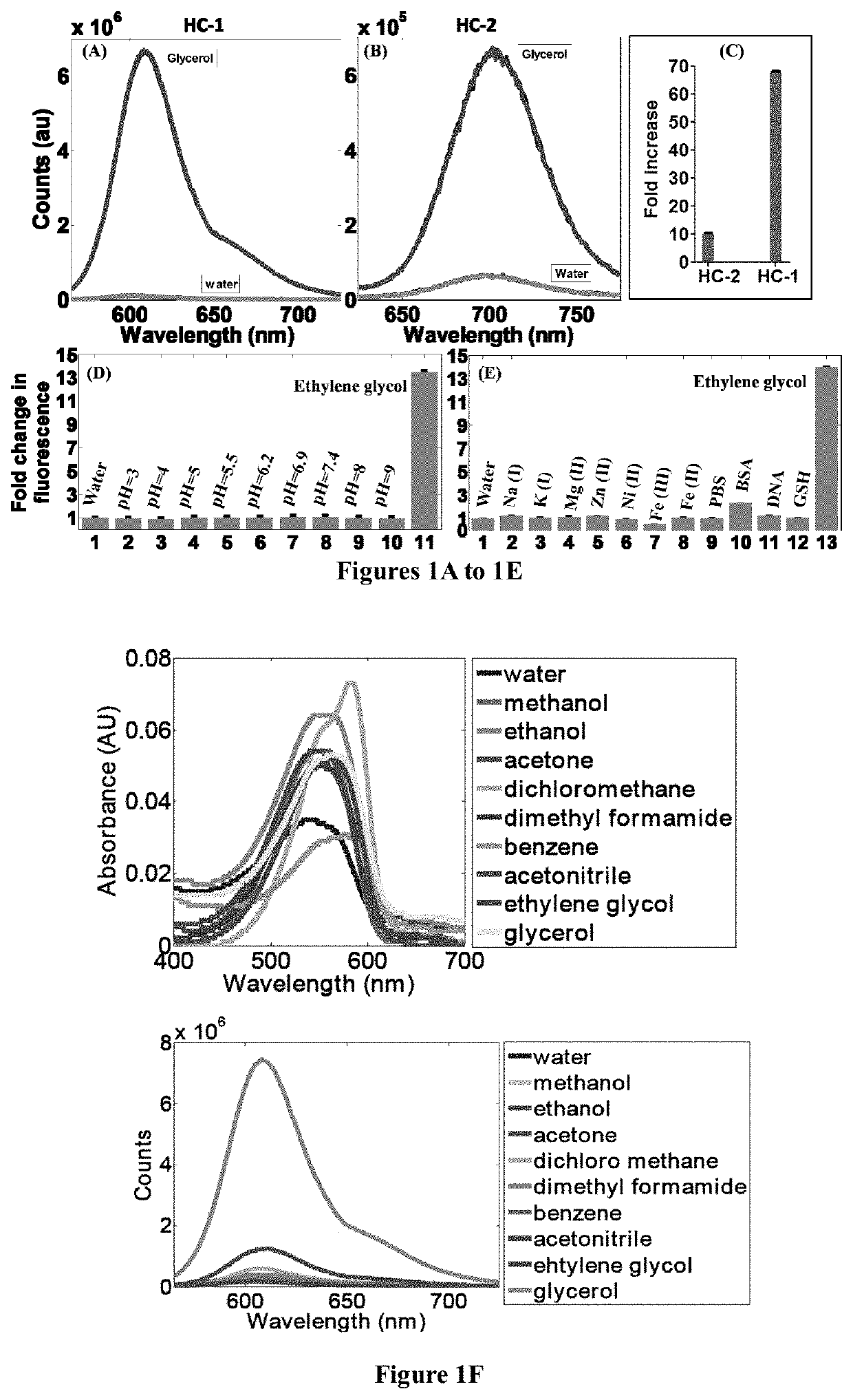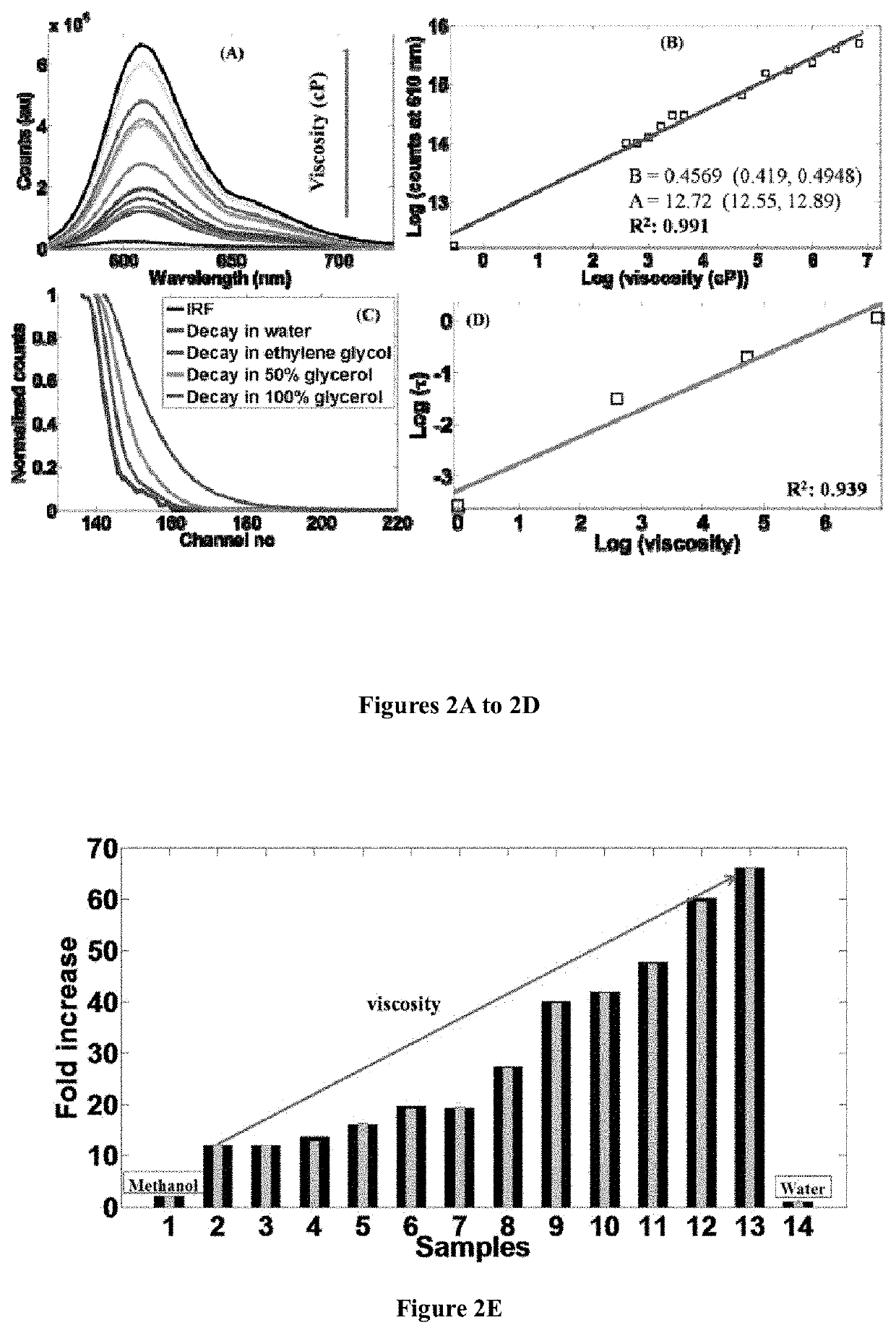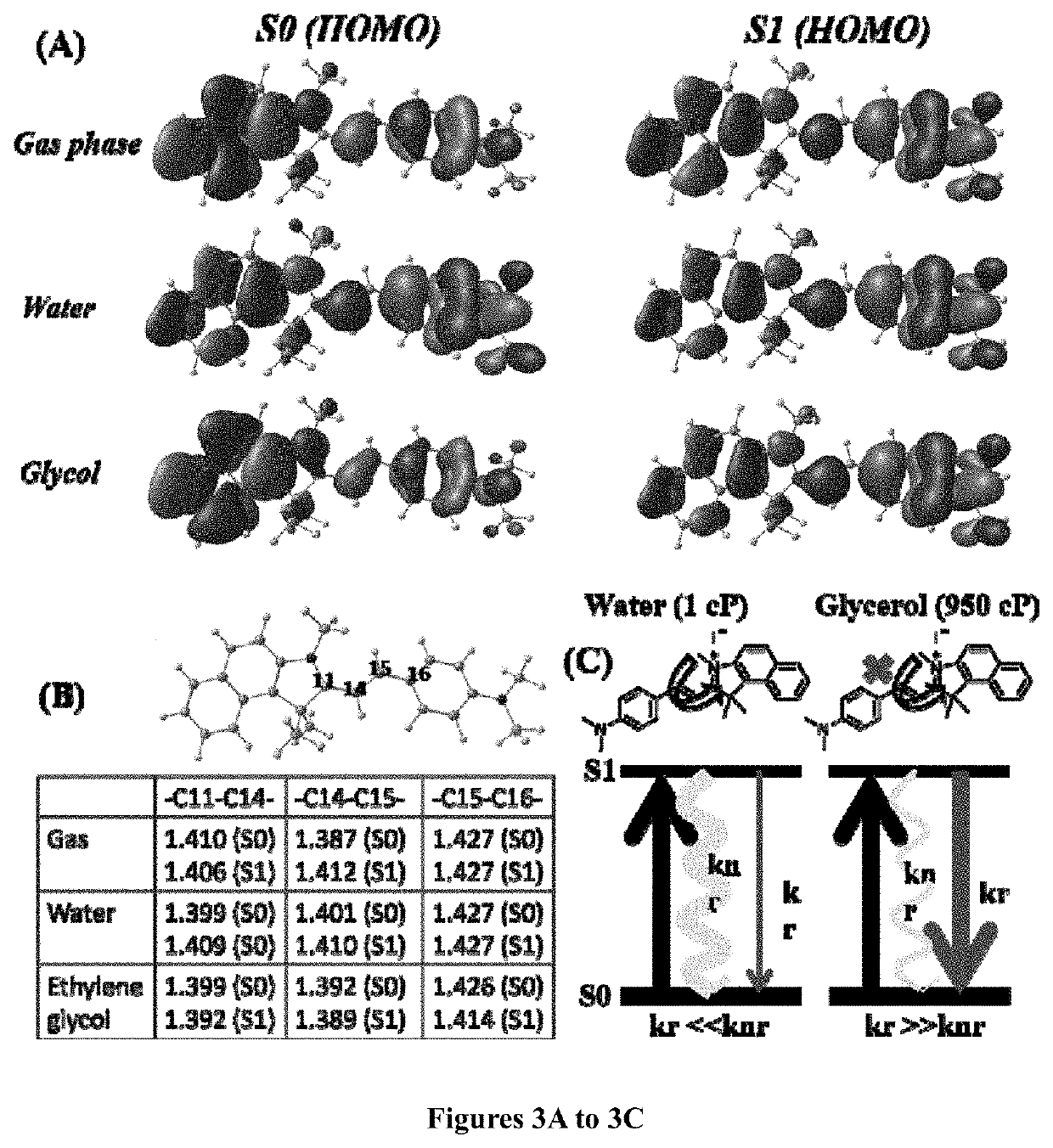Compounds as fluorescent probes, synthesis and applications thereof
a fluorescent probe and compound technology, applied in the field of chemical sciences and imaging technology, can solve the problems of uneven staining, unsuitable existing dyes based on rhodamine scaffolds, and inoptimal staining of sensitive cells like primary cells and stem cells
- Summary
- Abstract
- Description
- Claims
- Application Information
AI Technical Summary
Benefits of technology
Problems solved by technology
Method used
Image
Examples
example 1
General Synthetic Procedure for Preparing Compound of Formula-I:
[0144]A mixture of compound of Formula-III (5.00 mmol), and substituted / unsubstituted aldehyde derivative (5.00 mmol) was added in presence of 10 ml anhydrous ethanol. 0.5 ml of piperidine was added to this mixture and the resultant reaction mixture was refluxed for about 2 to 4 hours followed by cooling to obtain the precipitate. The precipitated solid was filtered and then purified by column chromatography using DCM / Methanol and the eluent yielded compound of Formula I.
wherein[0145]‘R4’, ‘R5’ and ‘R6’ are individually selected from a group consisting of hydrogen, alkoxy and alkyl; and[0146]‘X’ is selected from a group consisting of I, Cl, Br and F.
example 2
Synthesis of HC-1
(E)-2-(4-(Dimethylamino)styryl)-1,1,3-trimethyl-1H-benzo [e]indol-3-ium iodide (HC-1)
[0147]
[0148]A mixture of 1,1,2-trimethyl-1H-benzo[e]indolium iodide (5.00 mmol), 4-(dimethylamino)benzaldehyde (5.00 mmol) was added with 10 ml anhydride ethanol, and to this mixture 0.5 ml of piperidine was added and was refluxed for about 3 hours. After cooling to room temperature, the red solid was precipitated. The precipitated red solid was filtered and then purified by column chromatography using DCM / Methanol as the eluent yielded brick red solid HC-1. Mass Spectroscopy (MS), proton and C13 nuclear magnetic resonance (NMR) spectroscopy of HC-1 are provided in FIGS. 16, 18 and 19, respectively.
example 3
Synthesis of HC-2
2-((1E,3E)-4-(4-(Dimethylamino)phenyl)buta-1,3-dien-1-yl)-1,1,3-trimethyl-1H-benzo[e]indol-3-ium iodide
[0149]
[0150]A mixture of 1,1,2-trimethyl-1H-benzo[e]indolium iodide (5.00 mmol), 4-(dimethylamino)cinnamaldehyde (5.00 mmol) was added with 10 ml anhydride ethanol, and to this mixture 0.5 ml of piperidine was added and was refluxed for 3 hours. After cooling to room temperature, the dark blue solid was precipitated. The precipitated dark blue solid was filtered and then purified by column chromatography using DCM / Methanol as the eluent yielded dark blue solid HC-2. Mass Spectroscopy (MS), proton and C13 nuclear magnetic resonance (NMR) spectroscopy of HC-2 are provided in FIGS. 17, 20 and 21, respectively.
PUM
 Login to View More
Login to View More Abstract
Description
Claims
Application Information
 Login to View More
Login to View More - R&D
- Intellectual Property
- Life Sciences
- Materials
- Tech Scout
- Unparalleled Data Quality
- Higher Quality Content
- 60% Fewer Hallucinations
Browse by: Latest US Patents, China's latest patents, Technical Efficacy Thesaurus, Application Domain, Technology Topic, Popular Technical Reports.
© 2025 PatSnap. All rights reserved.Legal|Privacy policy|Modern Slavery Act Transparency Statement|Sitemap|About US| Contact US: help@patsnap.com



